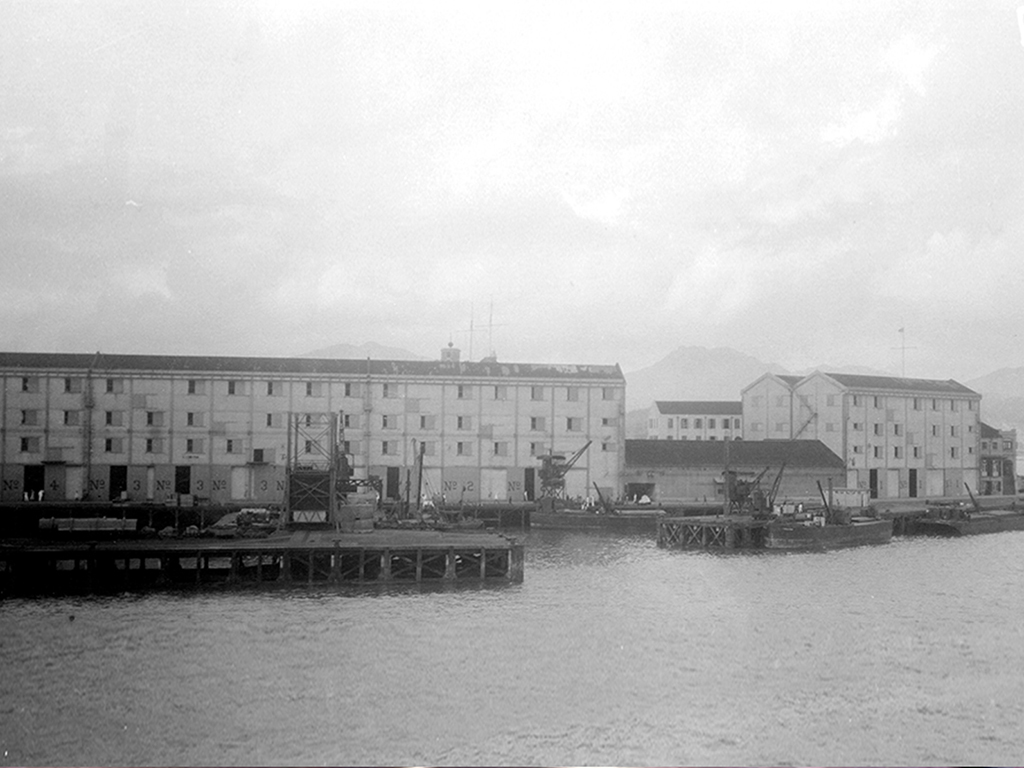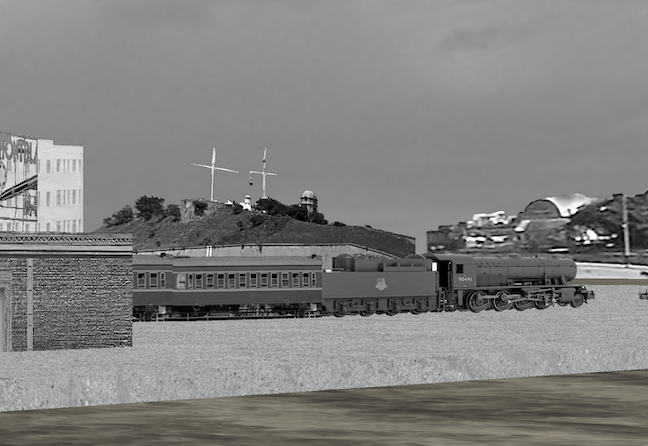Tsim Sha Tsui – Waterfront ca. 1950
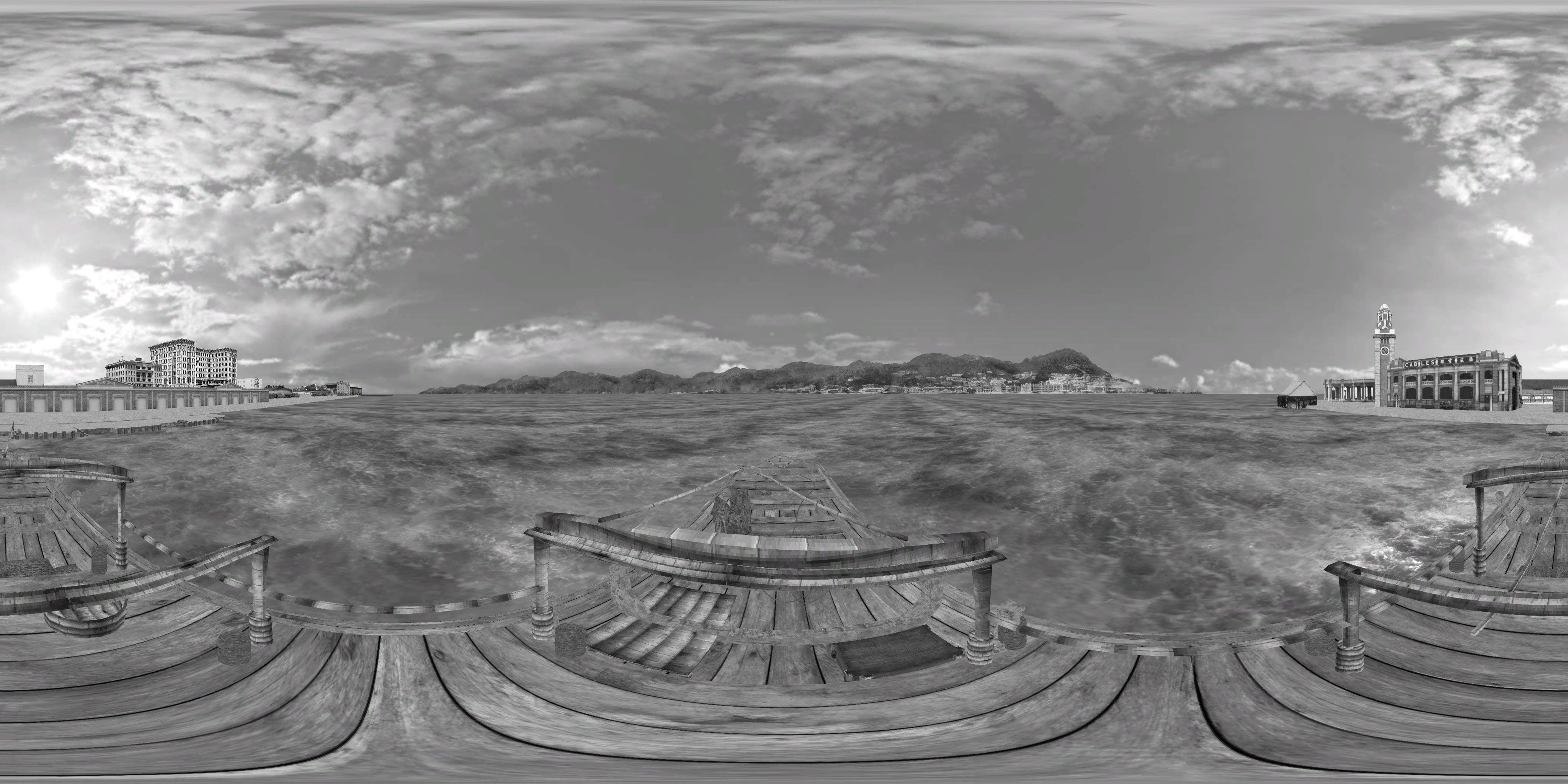
360-degree panoramic artwork developed from historical photos
Historical Hotspots:
Kowloon Railway Station
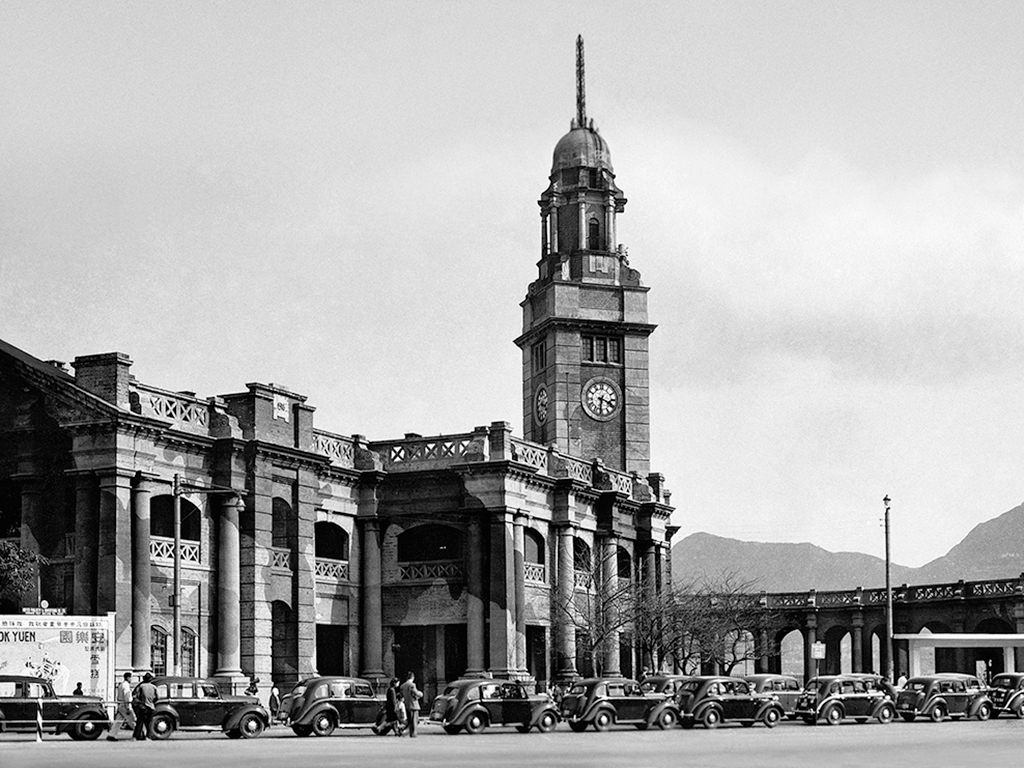
The construction of the Kowloon Canton Railway (KCR) fell into place at the beginning of the 20th century. The portion inside Hong Kong (the “British Section”: from Tsim Sha Tsui to Lo Wu) was financed, constructed and operated by the Hong Kong government; while the rest in Mainland China (the “Chinese Section”: from Guangzhou to Lo Wu) was funded and constructed by the British & Chinese Corporation on behalf of the Qing government through loans. It was then handed over to the Qing government for operation after completion. The permanent terminus of the British Section was set to be in Tsim Sha Tsui and the construction started in 1911. The platform first operated in 1914, and the station was completed two years later. The building was symmetrical on both sides, using red brick and granite as the main materials. There were ticket offices, waiting rooms, platforms and control rooms underground, and were all connected to the traffic roundabout and the Star Ferry. In 1921, the clock tower began to operate. In 1975, the Kowloon Railway Station was closed because of the opening of the Hung Hom terminus. It was demolished three years later. Only the clock tower was retained.
In 1955, the first two diesel-electric locomotives arrived in Hong Kong and inaugurated a new page in the history of the Hong Kong railway. The two diesel locomotives No. 51 and No. 52 were named Sir Alexander and Lady Maurine respectively. It was also the first time in Hong Kong that locomotives were named after a person. Now, diesel locomotive No. 51 is on public display at the Hong Kong Railway Museum in Tai Po.
Photo courtesy of FormAsia Books Limited
The Second Star Ferry Pier Kowloon
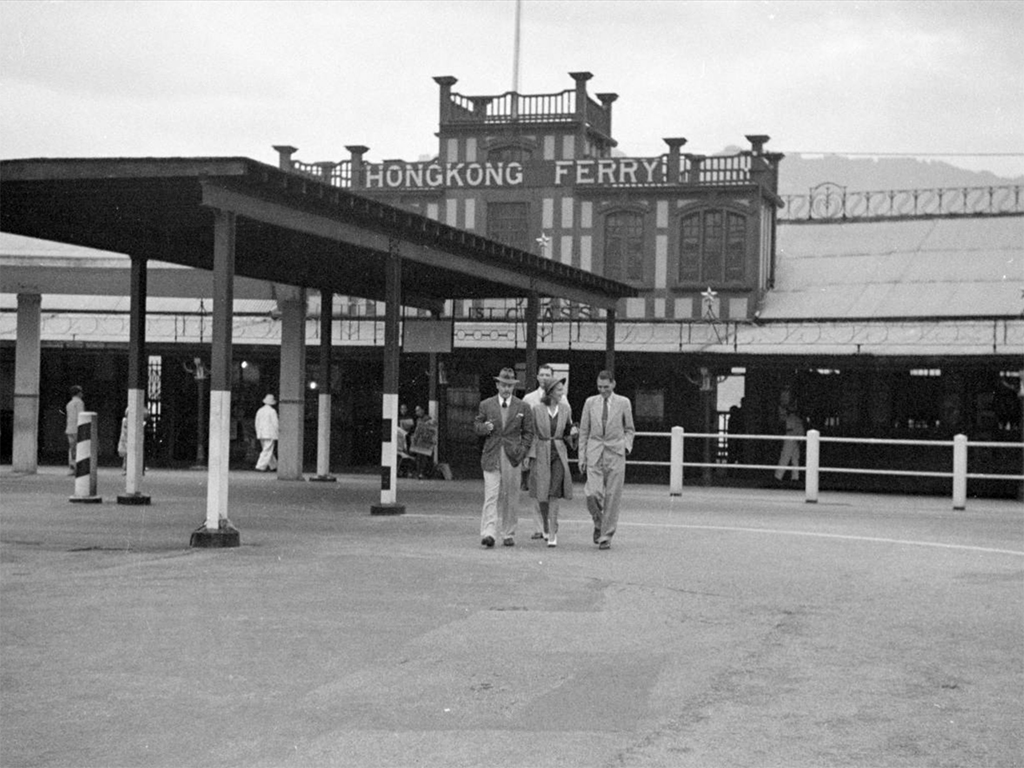
Since 1888, the Star Ferry provided ferry services between Hong Kong Island and Kowloon. The Tsim Sha Tsui Ferry Pier constructed by the Kowloon Wharves was opened in April 1906. However, in September of the same year, a typhoon destroyed the pier, ships and other facilities so the company could only set up a temporary pier. The service was not fully restored until the completion of the second Tsim Sha Tsui Ferry Pier in 1912. With the increase in passenger numbers, the Star Ferry decided to rebuild the piers in Central and Tsim Sha Tsui. The west wing of the Star Ferry Pier Kowloon was opened in 1957. By 1958, the two Star Ferry Piers were fully opened, and the Tsim Sha Tsui Pier has been in use ever since.
Star Ferry Company, Ltd. was established in 1898, formerly known as the Kowloon Ferry Company which was established in 1880. Its ferry is named after the word “star” because the founder of the company believed in Zoroastrianism stating that stars represent light and purity. Many ferries in the existing fleet have been in service since the 1950s and have been undergoing continual and transporting passengers safely across Victoria Harbour. Taking the Star Ferry to visit Victoria Harbour was once named as one of the “50 Places of a Lifetime” by the magazine National Geographic Travel.
Photo courtesy of the American Geographical Society Library, University of Wisconsin- Milwaukee Libraries
Victoria Harbour
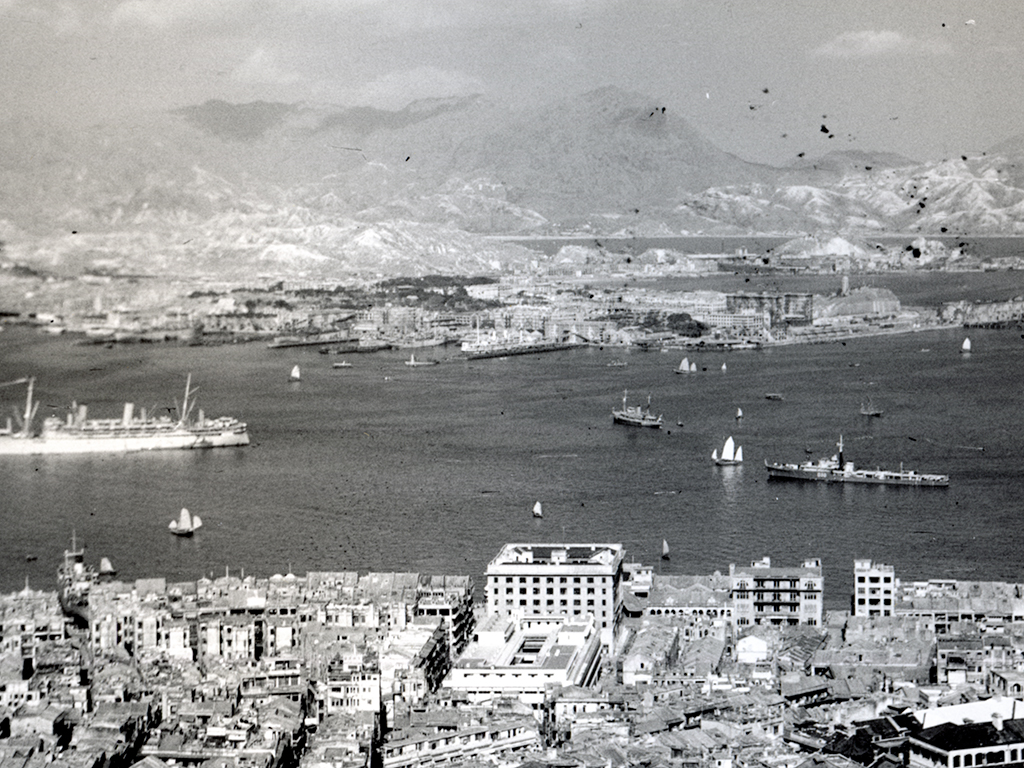
Victoria Harbour is a natural deep-water haven separating Hong Kong Island and the Kowloon Peninsula, providing safe berths for marine transportation. In 1860, the Qing government signed the “Convention of Peking” with Britain. In April 1861, the harbour was named after Queen Victoria, who was in power at that time. The British believed in the growth potential of Hong Kong, so it focused on developing the Victoria Harbour. As early as the 1860s, cruises and transport ships from different countries berthed at this location. With the development of trade between foreign countries and China, Hong Kong’s role as an entrepot had become more significant and had been the catalyst for the development of various industries.
Shipping used to be an essential way to transport manufactured products from factories to overseas markets, and it had made a significant contribution to the industrialisation of Hong Kong. Today, we can see not only ships passing through Victoria Harbour, but also the skyscrapers which line both sides of the strait, painting a unique maritime landscape of the cit. There is also a large-scale multi-media show “A Symphony of Lights” at night, adjacent buildings along the Harbour project lighting effects and LED screen patterns, alongside the music performed by the Hong Kong Philharmonic Orchestra, symbolising Hong Kong’s dynamic energy and contrasting culture as an international metropolis!
Photo courtesy of Special Collections, The University of Hong Kong Libraries
Holts Wharf
Holts Wharf was once one of Hong Kong’s largest warehouses and wharves. Butterfield & Swire acted as the agent for the Blue Funnel Line, which acquired the land in 1905 with construction beginning in 1906. Four years later, the wharf started operations through warehouses and cargo yards. With its proximity to the Kowloon-Canton Railway, the site became the intersection of railway and ocean freight, constituting one of Hong Kong’s shipping and logistics hubs connecting to the rest of the world. In 1971, New World Development purchased the land and converted it into a hotel and shopping centre.
Holts Wharf was named after its founder Alfred Holt. It was commonly known as “Blue Funnel” since all its ships have blue funnels and was highly visible from a distance. Thus, the place was called “Blue Funnel Warehouse”.
Photograph by G. Warren Swire. Photo courtesy of John Swire & Sons Ltd and Historical Photographs of China, University of Bristol.
Victoria Peak
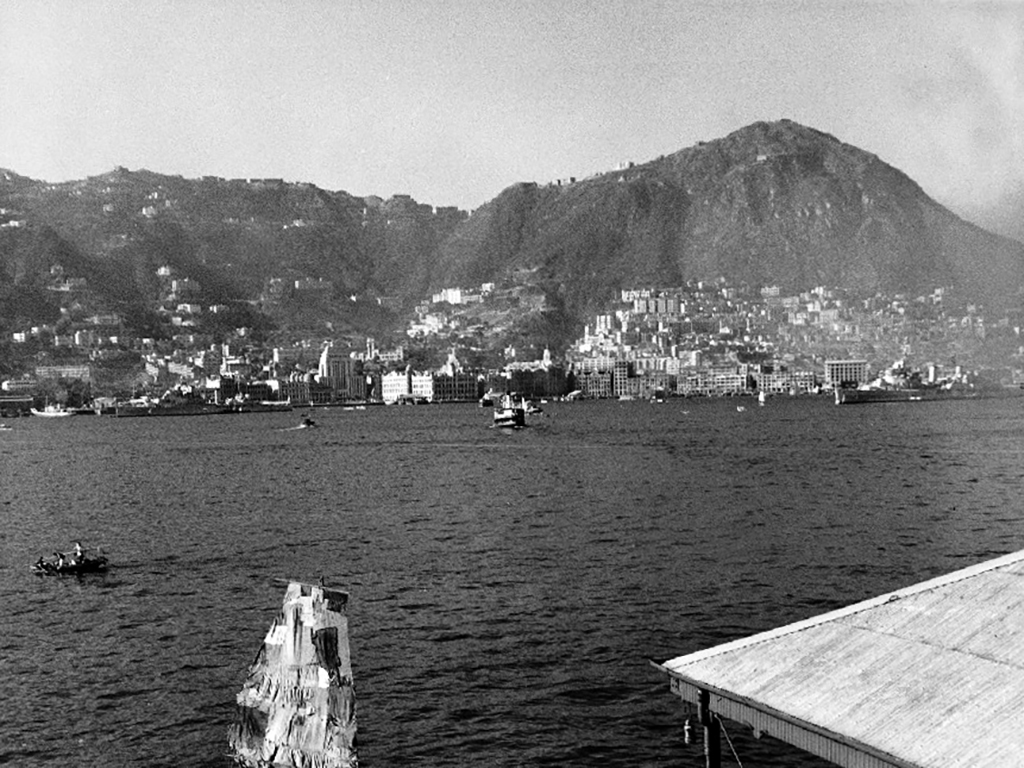
Victoria Peak is one of the tallest mountains in Hong Kong that is 552 metres above sea level. In the early 19th century, only the upper class and foreign envoys were entitled to live on the mountain. People relied on sedan chairs to travel to and for the Peak until the opening of the Peak Tram in 1888. Victoria Peak gradually became one of the famous tourist attractions in Hong Kong. Gazing across the Victoria Harbour from the Peak is one of the most favourite itineraries for travellers.
Victoria Peak has its own fascinating historical story. It is said that when telegram had not yet been widespread in Hong Kong, whenever ocean-going vessels were reaching Hong Kong waters, the staff at the observation station on the Peak would raise the flag as a notification to the port navigators down the mountain. Therefore, the Peak is also called in Chinese “flag-raising mountain”.
Photo courtesy of Harvard- Yenching Library, Harvard University
Animation:
Kowloon Railway Station was a notably famous landmark at Tsim Sha Tsui. Since the railway facilities were severely damaged during World War II, the Kowloon-Canton Railway began its improvement of the train system in the 1950s. Diesel was then applied to replace steam to power the locomotives.
